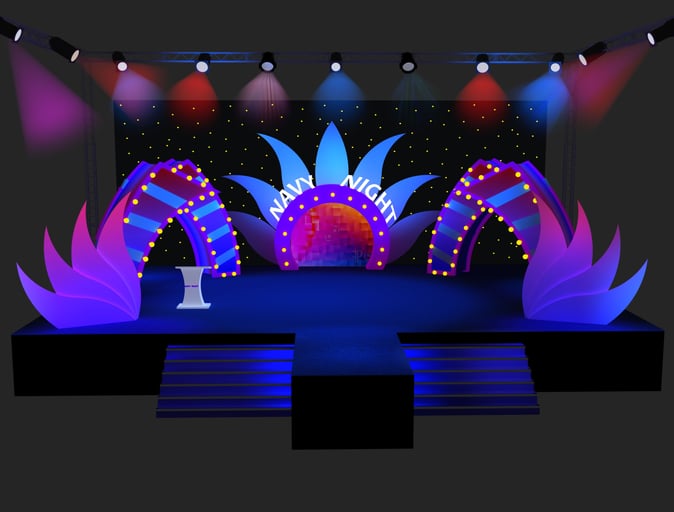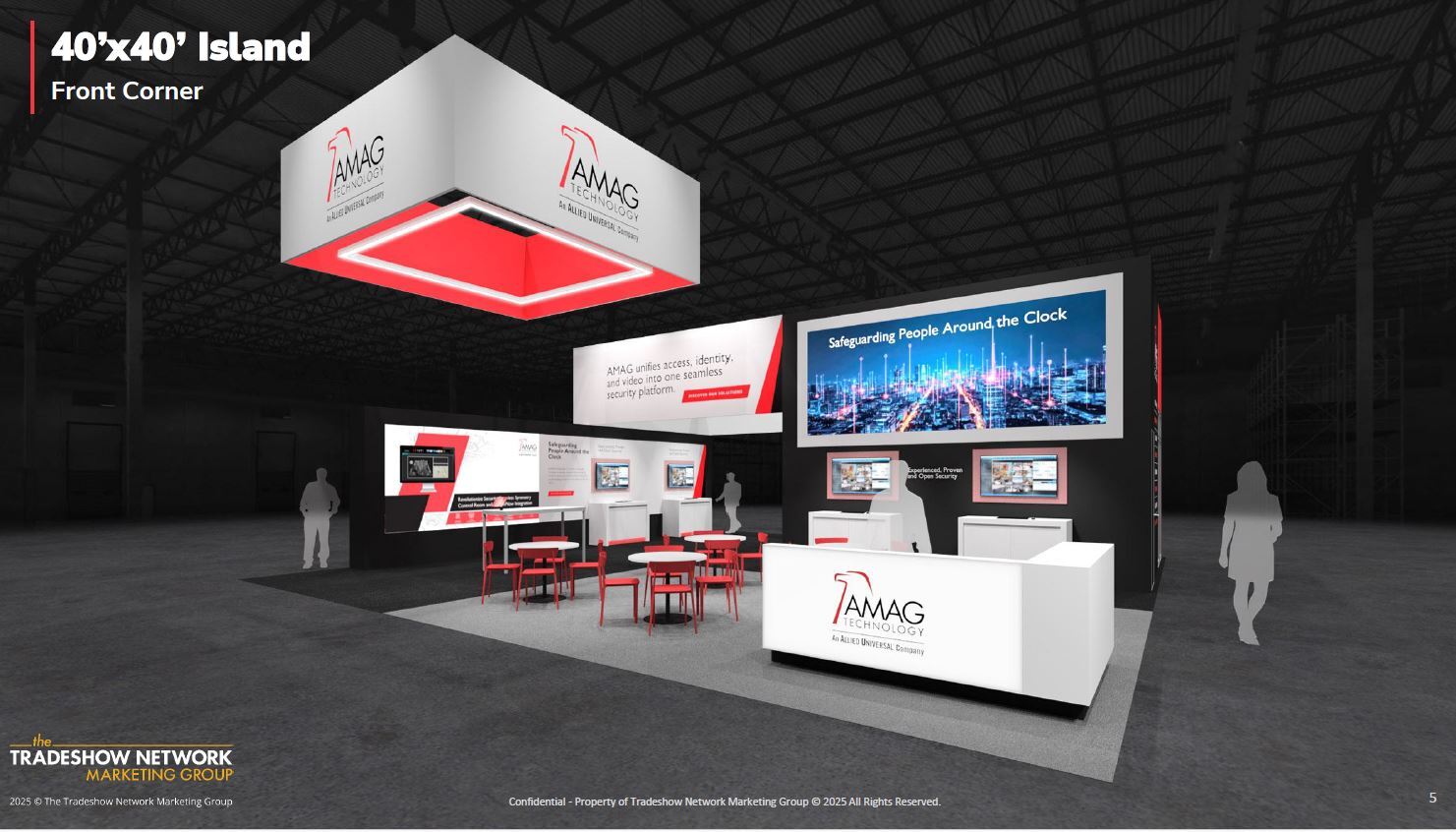Fifty-seven percent of people say they’re addicted to their phones, reveals a recent study of 1,000 people from Reviews.org. That’s a growing problem for presenters, who hate to look out on a sea of bent heads illuminated by screens. The challenge of capturing and keeping an audience’s attention will only intensify, says Liz Whittaker, vice president of creative services for Encore. The answer, she says, lies in event design. Studies demonstrate how chronically distracted we are. People can only pay attention to a single screen for an average of 47 seconds, according to Gloria Mark, chancellor’s professor of informatics at the University of California, Irvine, and author of the study, “Attention Span: A Groundbreaking Way to Restore Balance, Happiness, and Productivity.”
Clearly, we need to rethink the way we deliver content if we stand a chance of competing with these distractions, says Anthony Vade, Encore’s event experience strategy director. Meeting hosts need to avoid passive or individual experiences — such as one-way presentations, the old paradigm of lectures from the stage — in favor of learning experiences that take more of your participants’ needs into consideration, he says. That means revamping how you approach an event from its inception. Following are tips for honing a new process for meetings. 
1/ Brainstorm with stakeholders
All event-design efforts need to start with a focused vision for the meeting. Gather your team and the event’s stakeholders to hammer out what the meeting is about, what you want attendees to get out of it, drill down into how you want them to feel during the event and how you want the event to live on once participants return to their offices.
“We have to find solutions that will move the event forward with a new mindset,” says Vade. “And have it documented on paper so you can refer back to it, and take it to people who couldn’t make the meeting so they can see what you’re hoping the participant will experience at your event.”
2/ Get to know your audience — better
The old way of planning focused on creating experiences for the majority of the group, a sort of “please most of the people most of the time” mentality. But, says Vade, that’s the fastest way to marginalize audience members and ruin diversity, equity and inclusion initiatives.
Effective event design explores the minds of the attendees. Using tools like empathy-mapping and journey-mapping gets this process started.
Simply put, empathy-mapping compiles what you know about your potential attendees, who the event is trying to reach and what you’re hoping they get out of the event. Journey-mapping outlines every step the participant will take, from learning of the event, to registering, traveling, attending, and continuing to learn after the meeting is over. This map needs to consider all types of attendees: able-bodied people; those who need assistance of any kind; people who are in minority groups; and people with neurodiverse ways of learning and interacting.
“Very few people experience events in the same way,” Vade says. “So we need to use methods that allow us to understand our audience’s preferences, including their learning and networking styles.”
As the planning process continues, use the maps to design surveys for focus groups or your list of potential attendees so you can use their insights to create the meeting they want, while still adhering to your stakeholders’ requirements.
“How people engage at events reflects the culture of the organizations they are part of,” Vade adds. “Event professionals have a big opportunity to help lead these important DEI movements by connecting and understanding their audiences’ needs, emotions and intersectionality.”
3/ On-site: Start with hello
For the event itself, dedicate structured time at the beginning to encourage interaction, getting participants communicating organically right away. “Facilitators should be driving the conversation, and making sure participants follow the steps of the exercise, but also take the time to let the audience have moments,” says Shannon DuPont, director of program development for TeamBonding, a team-building company. “If we see a connection is happening, let’s encourage that — and maybe step back a second and see where it goes.”
DuPont uses an exercise in which attendees are assigned to teams as they arrive, and then sent to tables where they find a locked box full of puzzles similar to those that open doors in escape rooms.
“It’s a very equalizing experience,” she says. “Nobody’s senior, there’s nobody who’s junior, you’re all approaching it for the first time together. And that collective learning experience is really bonding.” Plus participants learn new things about each other, such as who’s good at math problems or word puzzles.
Vade suggests using a venue’s digital signage to get conversations going by displaying a question on all of the signs; this prepares attendees for an upcoming discussion as they arrive. “We’ll pose a conversation starter that the attendee can have ready in their mind for when they step into the next room,” he says.
Old-fashioned icebreakers are useful as well, to get everyone chatting and relating right off the bat. For instance, says DuPont, the host can instruct participants to team up by birth month, and then, after they’ve formed the 12 groups, switch it up and ask them to rearrange based on which toothpaste they used that morning. “It’s important to do this before you get into the nitty-gritty of the meeting,” she adds, to open the day with that basic human connection.
4/ Play with the hierarchy
Every presentation serves the event’s leaders in different ways, Vade explains.
Some CEOs want to be the rock stars, and some want to be immersed with their teams. “One of the ways we’ve approached that is to be very strategic about the height of the stage,” he says. By raising that height, the person on stage really grabs the spotlight. A little bit lower moves the CEO or VIP closer to the audience, and the front row feels like they can reach out and touch them.
Then there are the executives who want to be both: They are charismatic leaders, but they also want to be in the trenches with the organization’s employees. “We will put smaller, lower satellite stages out in the middle of the audience,” Vade says, “and allow that CEO to start on the main stage with the big production — the flashing lights and the smoke machine — have their rock-star moment, but then step off the front and run out into the audience.”
DuPont notes that some of TeamBonding’s clients ask for activations that try to level the playing field between everyone in the room, where participants are all doing the same thing together, regardless of their daily roles.
“But a lot of what makes people feel uncomfortable, unfortunately, is that sense of hierarchy,” she says. With their bosses or CEOs in the midst, many participants worry that they should behave a certain way, and hold back from truly engaging in the experience.
But if the higher-up is the type of person who can just play games with people or have those guided conversations as an attendee, that can be a game-changer. “It allows participants to see their managers as people, too,” DuPont says. “And their sense of fear or intimidation gets pushed down a little bit. For the manager, they’re able to understand and get to know some of their employees in a way that they were never able to before.”
Whether or not it makes sense to level the playing field by eliminating any reference to titles depends on the group and the purpose of the meeting. There are pros and cons to eliminating those notions of hierarchy.
“For some organizations, you won’t be able to do that,” Vade points out. “The hierarchy is just too ingrained in the cultural DNA.”
What’s more, recognizing these titles is an essential benefit for some. In a recent Northstar webcast, a participant said, “As a Black woman who is often told she looks a lot younger than she is, titles are very helpful. Without my title showcasing my work, I find I’m sometimes overlooked at networking events.” When she can introduce herself using her title, it lets people know what her experience is, and can shake up preconceived notions.
5/ Go with the flow
Effective event design must allow for the unplanned moments that develop among participants. With the correct pieces in place, says DuPont, planners can encourage those moments to continue. Be ready to rejigger the agenda if a session goes rogue — sometimes that’s where the magic happens
“I think the dream is that we can all be agile in our approach,” says Vade, noting that subtle changes can be made, sometimes without letting participants know. “We know our events back to front, we’ve designed them, we’ve got the run of show. But most attendees don’t pay as much attention to the agenda as we would like them to. And they don’t necessarily know when things are changing.”
DuPont agrees. “I find we really want to shift perspective during a training-and-development type of program when there’s a real ‘aha’ moment. We should acknowledge and address that, and actually dig deeper into that conversation.”
6/ Experiment
Getting your organization’s event-design formula just right takes time and tweaking, but when it clicks, every single person involved in the meeting prospers — professionally and emotionally — and business thrives.
Guest Blogger: Learn more from Shannon DuPont and Anthony Vade in Northstar’s webinar, “Crafting Unique Experiences for Groups.”






